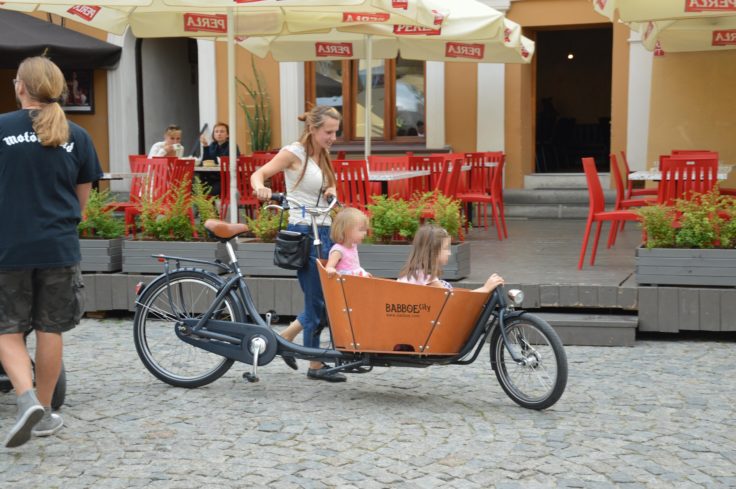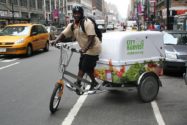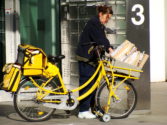September 13, 2019
Urban Freight Will Keep Growing, but it Doesn’t Have to Look Like This
As customers of online retailers continue to purchase everything from groceries to furniture online, delivery services show no sign of abating. Is it time for freight to change?
Check out a new article by the New York Times about NYC’s new city-wide program that specifically promotes the use of electric cargo delivery bikes here.
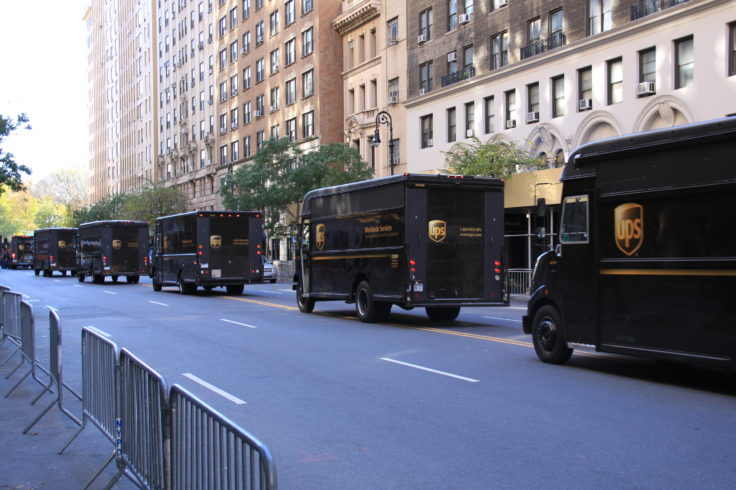
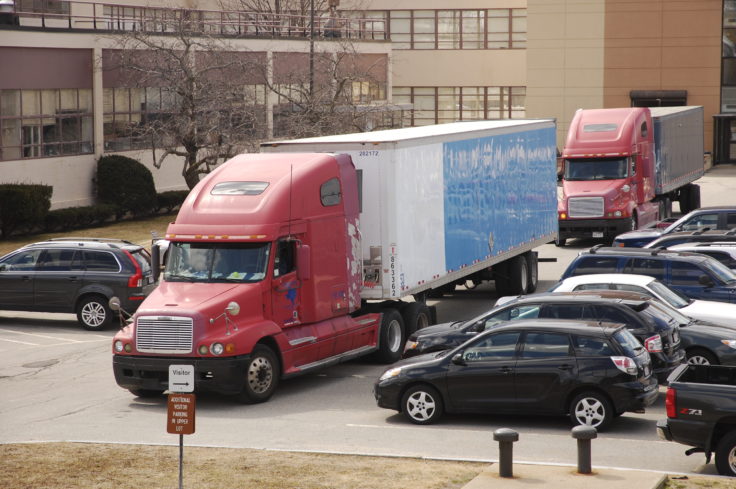
Last week, The New York Times published a devastating look at one of the ways that Amazon’s delivery practices are making our streets more dangerous places, especially for pedestrians and cyclists. This comes as little surprise to urbanists, who, along with labor, and environmental advocates, have been sounding the alarm about the major increase in urban freight traffic led by the online giant.
While the Times piece focused on American cities and Amazon specifically, the implications are worldwide. Around the world, people increasingly expect deliveries of more and more things to be made with staggering immediacy. Especially for people in urban centers, this expectation has led to massive traffic increases. Fortunately, there is a better solution, one that is already in place in some cities. Replacing inefficient trucks in city centers with bike and e-bike delivery would massively improve safety, cut noise and emissions, and free up street space.
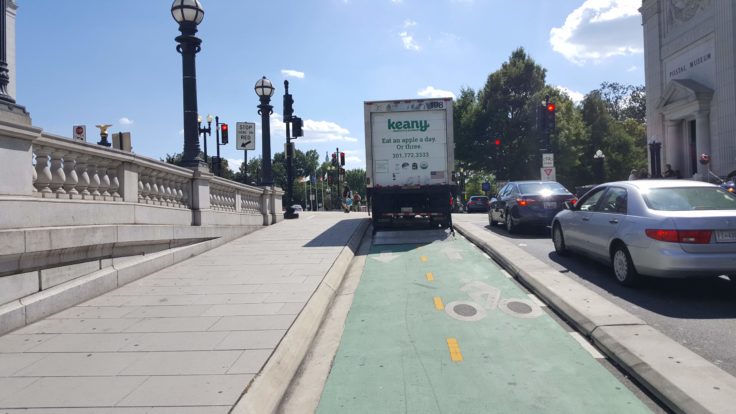
Replacing inefficient trucks in city centers with bike and e-bike delivery would massively improve safety, cut noise and emissions, and free up street space.
The Fatal Consequence of Trucks on Roads
Every year, around 1.3 million people die as a result of vehicles, meaning that every single day over 3000 people die as a result of vehicular traffic. In the United States in 2019, the number of traffic related deaths increased by 30% from the previous year. Around the world, traffic related injuries and deaths are on an uptick. There are many disputable causes of this, but one certainty is that larger vehicles are more dangerous. While there has not been significant research studying the relationship between delivery vehicles and pedestrian deaths, it is near impossible to argue that these are not related.
Larger vehicles, with the driver at a more elevated position, have less visibility at street level particularly when it comes to children or people in wheelchairs who are lower to the ground than adults who are taller. Additionally, the height of trucks means that any collision is higher on the body of the person being hit. Unlike sedans, which will strike people first lower on their bodies, SUVs and trucks strike lethal blows at peoples’ torsos and heads. Additionally, many new car designs are engineered to prioritize driver and passenger safety but do not focus on the safety of anyone around or outside of the vehicle.
Speed Demons
As 2-3, or even next day delivery services are becoming standard for many online retailers, the pressure for drivers to meet shorter and shorter deadlines continues to grow. Drivers are incentivized to deliver the goods within very limited timeframes, incentivizing dangerous driving like speeding. A major factor in whether or not a collision with a vehicle is deadly for a pedestrian is the speed at which the vehicle is traveling. The chances of being killed when being hit by a car increase nine fold when the driving speed increases from 23 to 58 mph. Some scientists have even cited speed as the single biggest factor in the fatality of a crash with a pedestrian. Take a high risk vehicle, like a large truck, and add the incentive to drive quickly and the result is a large fleet of perilous vehicles, posing an ever present threat to people around them.
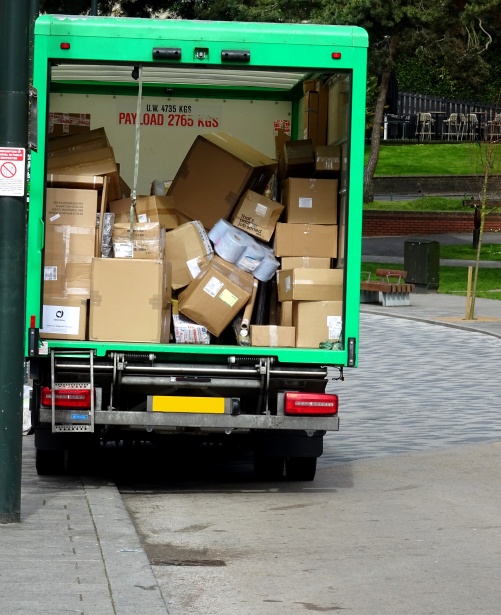
Congesting Streets
Not only are delivery vehicles dangerous, but they are starting to clog up streets, many of which already have limited capacity. Increased congestion and traffic are major challenges in many urban centers. Not only do more delivery vehicles mean more cars are on the road, but the loading of packages on and off of vehicles can take many hours and effectively monopolizes the curb or double parked spot the vehicle is occupying. Having a parked car sitting for hours at a curb while the driver loads material can exponentially clog up streets forcing cyclists off of bike paths and blocking important sidewalks used by hundreds of passersby. For instance, if a delivery vehicle double parks next to a building, the cars trying to pass sit waiting for the delivery to be completed. This means that passenger vehicles may be stuck with their engines running until the truck is able to move, letting them pass. The air pollution alone from the unnecessary standstill of vehicles is significant, not to mention the general traffic that will effect buses as well.
While customer demand will not decrease, what can change is the form of transportation used to deliver the goods.
Easy Solutions
While customer demand will not decrease, what can change is the form of transportation used to deliver the goods. For example, many food and restaurant delivery services rely on bicycle couriers and in many European countries mail carriers travel by bicycle. Shipping services, like DHL have begun cargo bicycle services in European urban areas. Bicycles of all kinds can pass in low emission or no emission zones, and would not be subject to congestion pricing. Currently, over 200 cities have some form of low emission zones in place, and that number is growing, particularly in high-demand markets. With increased popularity and improved models for e-bikes, or electric bicycles, delivery by bicycle can be even more efficient. E-bikes can increase speed and allow cyclists to pass on more challenging terrain, making delivery by bicycle even more efficient and reliable. Major online retailers have an opportunity to innovate distribution services and methods, if they so choose.
Mail carriers throughout Europe are piloting and using e-bikes as their delivery vehicles. This is a safer way to distribute mail and it has been found to be more efficient for the postal workers and for the environment.
To make bicycle delivery feasible, companies will have to create distribution centers closer to, or inside, urban centers with fleets of bike deliverers equipped to take packages throughout urban areas and work to train delivery people differently. Cities can encourage companies to innovate their delivery practices. Companies are fast at adapting when customers demand it – Amazon figured out how to deliver thousands of types of goods to people worldwide within 24 hours. If they can create channels and distribution methods with immediacy and efficiency, they can create the same efficiency with e-bikes.
Moving delivery to bicycles will require both creative infrastructure, and a reorientation of city space and expectations around distance and delivery. Yet, it remains a simple, entirely feasible solution to what is becoming a major liability, for delivery companies, our cities, and our planet.
